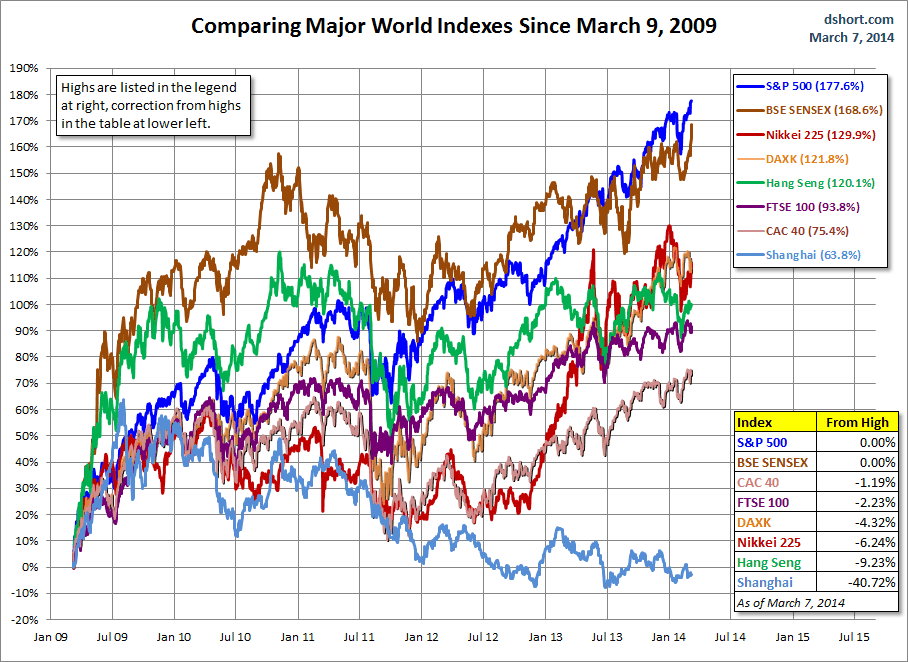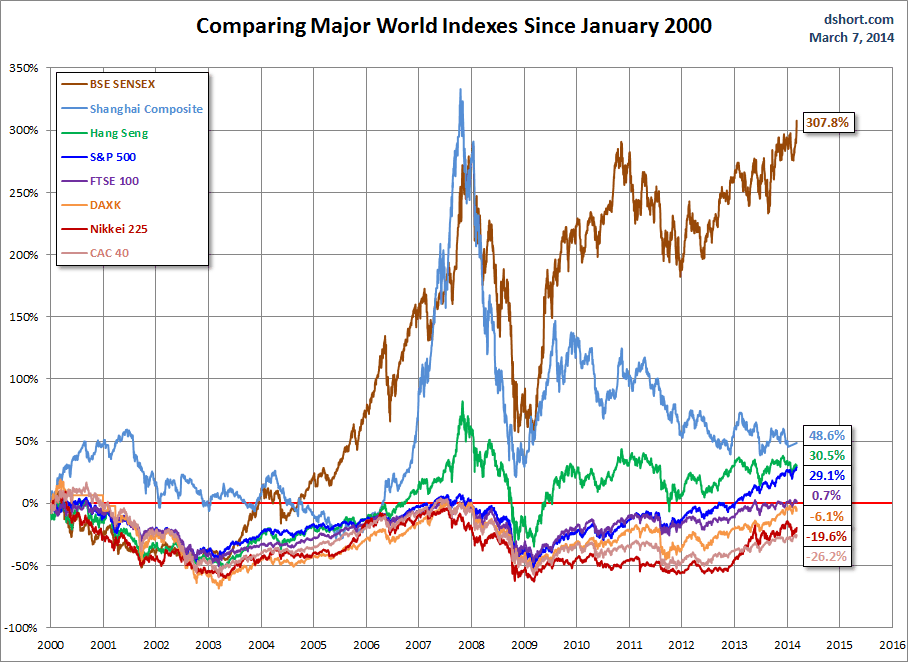At Friday's close the eight markets on my world watch list turned in a mixed weekly performance, with four winners and four losers. The spread between the 3.79% rally for India's SENSEX and the -3.52% rout for Germany's DAXK is the largest of the 10 weekly closes in 2014 the the gang of eight. Japan's Nikkei finished in second with a 2.92% gain. And the S&P 500 took third place with an even one percent rise for the week. Germany was joined by the other two European indexes on my watch list for the bottom trio.
The Shanghai Composite remains the only index on the watch list in bear territory -- the traditional designation for a 20% decline from an interim high. See the table inset (lower right) in the chart below. The index is down 40.72% from its interim high of August 2009. At the other end, both the S&P 500 and the BSE SENSEX closed the week at a record highs. France's CAC 40 is only 1.19% off its recent interim high following its 2009 low.
Here is a look at 2014 so far.
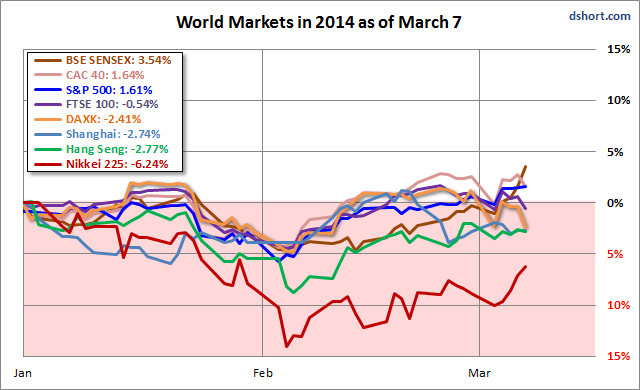
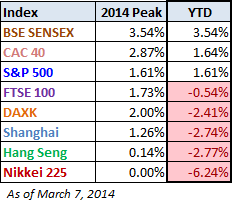
Here is a table highlighting the year-to-date index performance, sorted from high to low, along with the 2014 interim highs for the eight indexes. At this point, five of the eight indexes are in the red, with last year's big winner, the Nikkei, deep in the YTD cellar.
A Closer Look at the Last Four Weeks
The tables below provide a concise overview of performance comparisons over the past four weeks for these eight major indexes. I've also included the average for each week so that we can evaluate the performance of a specific index relative to the overall mean and better understand weekly volatility. The colors for each index name help us visualize the comparative performance over time.
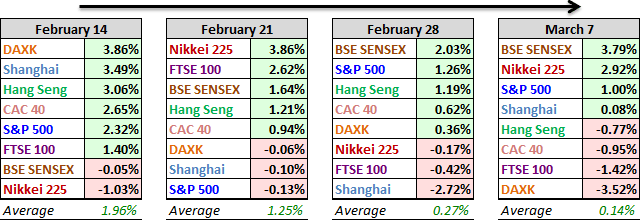
The chart below illustrates the comparative performance of World Markets since March 9, 2009. The start date is arbitrary: The S&P 500, CAC 40 and BSE SENSEX hit their lows on March 9th, the Nikkei 225 on March 10th, the DAX on March 6th, the FTSE on March 3rd, the Shanghai Composite on November 4, 2008, and the Hang Seng even earlier on October 27, 2008. However, by aligning on the same day and measuring the percent change, we get a better sense of the relative performance than if we align the lows.
Here is the same chart starting from the turn of 21st century. The relative over-performance of the emerging markets (Shanghai, Mumbai SENSEX and Hang Seng) up to their 2007 peaks is evident, and the SENSEX remains by far the top performer. The Shanghai, in contrast, formed a perfect Eiffel Tower from late 2006 to late 2009.

